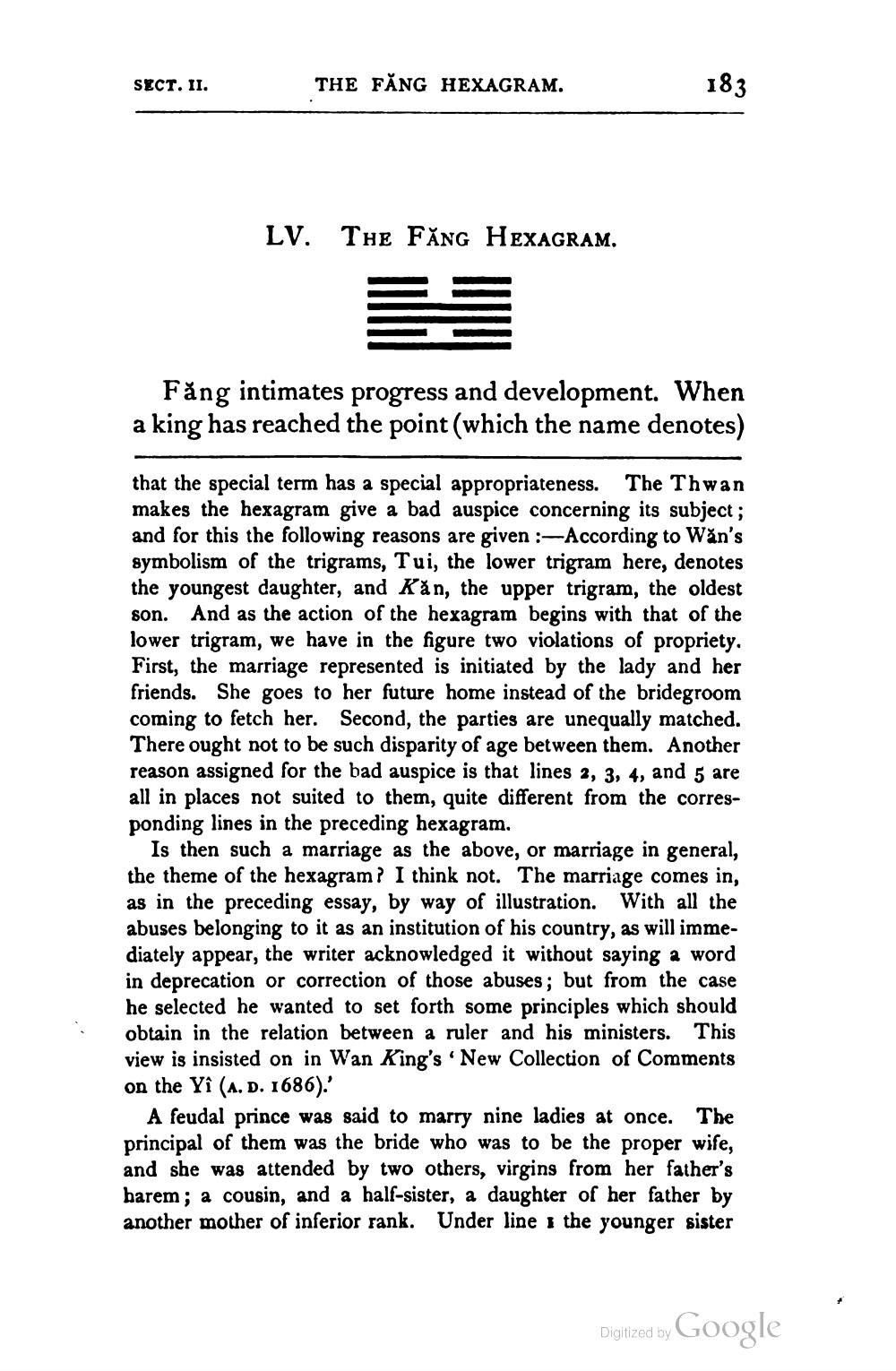________________
SECT. II.
THE FĂNG HEXAGRAM.
183
LV. THE FĂNG Hexagram.
Fång intimates progress and development. When a king has reached the point (which the name denotes)
that the special term has a special appropriateness. The Thwan makes the hexagram give a bad auspice concerning its subject; and for this the following reasons are given :-According to Wăn's symbolism of the trigrams, Tui, the lower trigram here, denotes the youngest daughter, and Kån, the upper trigram, the oldest son. And as the action of the hexagram begins with that of the lower trigram, we have in the figure two violations of propriety, First, the marriage represented is initiated by the lady and her friends. She goes to her future home instead of the bridegroom coming to fetch her. Second, the parties are unequally matched. There ought not to be such disparity of age between them. Another reason assigned for the bad auspice is that lines 2, 3, 4, and 5 are all in places not suited to them, quite different from the corresponding lines in the preceding hexagram.
Is then such a marriage as the above, or marriage in general, the theme of the hexagram? I think not. The marriage comes in, as in the preceding essay, by way of illustration. With all the abuses belonging to it as an institution of his country, as will immediately appear, the writer acknowledged it without saying a word in deprecation or correction of those abuses; but from the case he selected he wanted to set forth some principles which should obtain in the relation between a ruler and his ministers. This view is insisted on in Wan King's New Collection of Comments on the Yi (A. D. 1686).'
A feudal prince was said to marry nine ladies at once. The principal of them was the bride who was to be the proper wife, and she was attended by two others, virgins from her father's barem ; a cousin, and a half-sister, a daughter of her father by another mother of inferior rank. Under line 1 the younger sister
Digitized by Google




